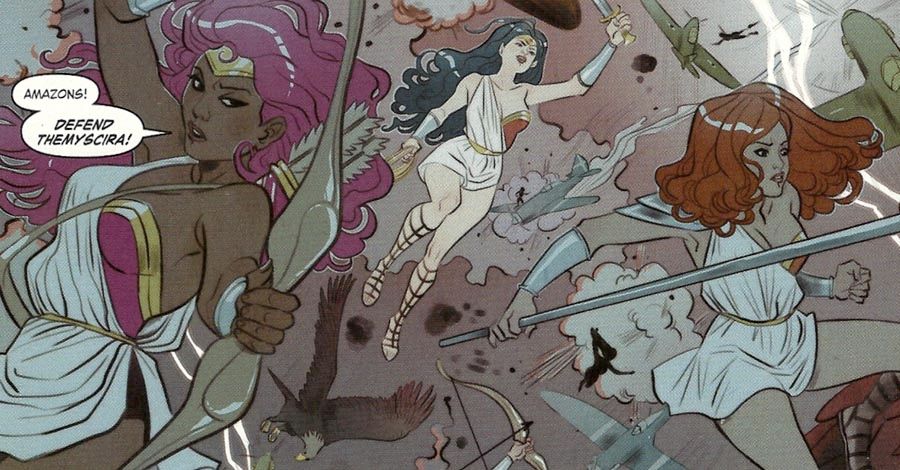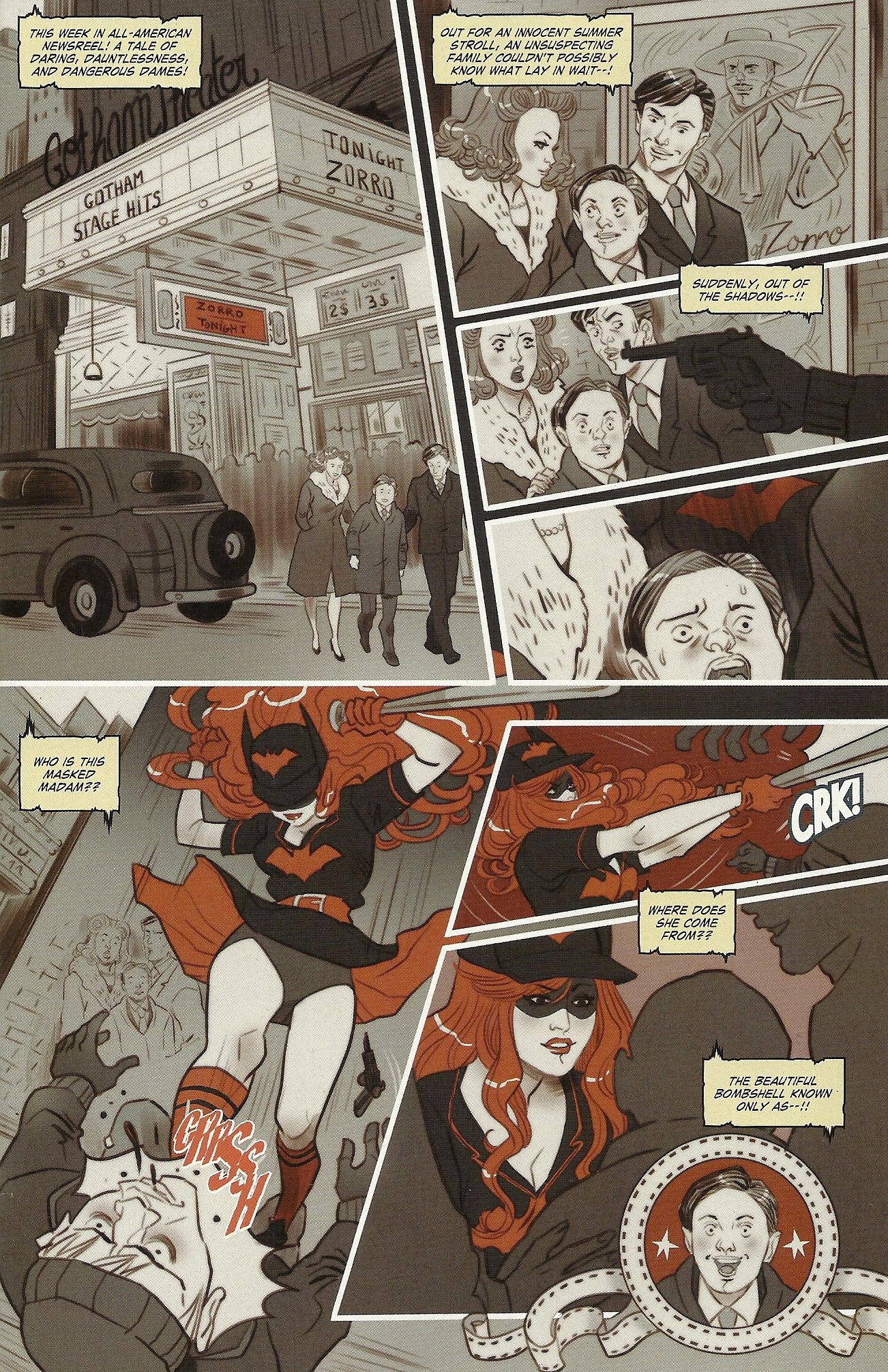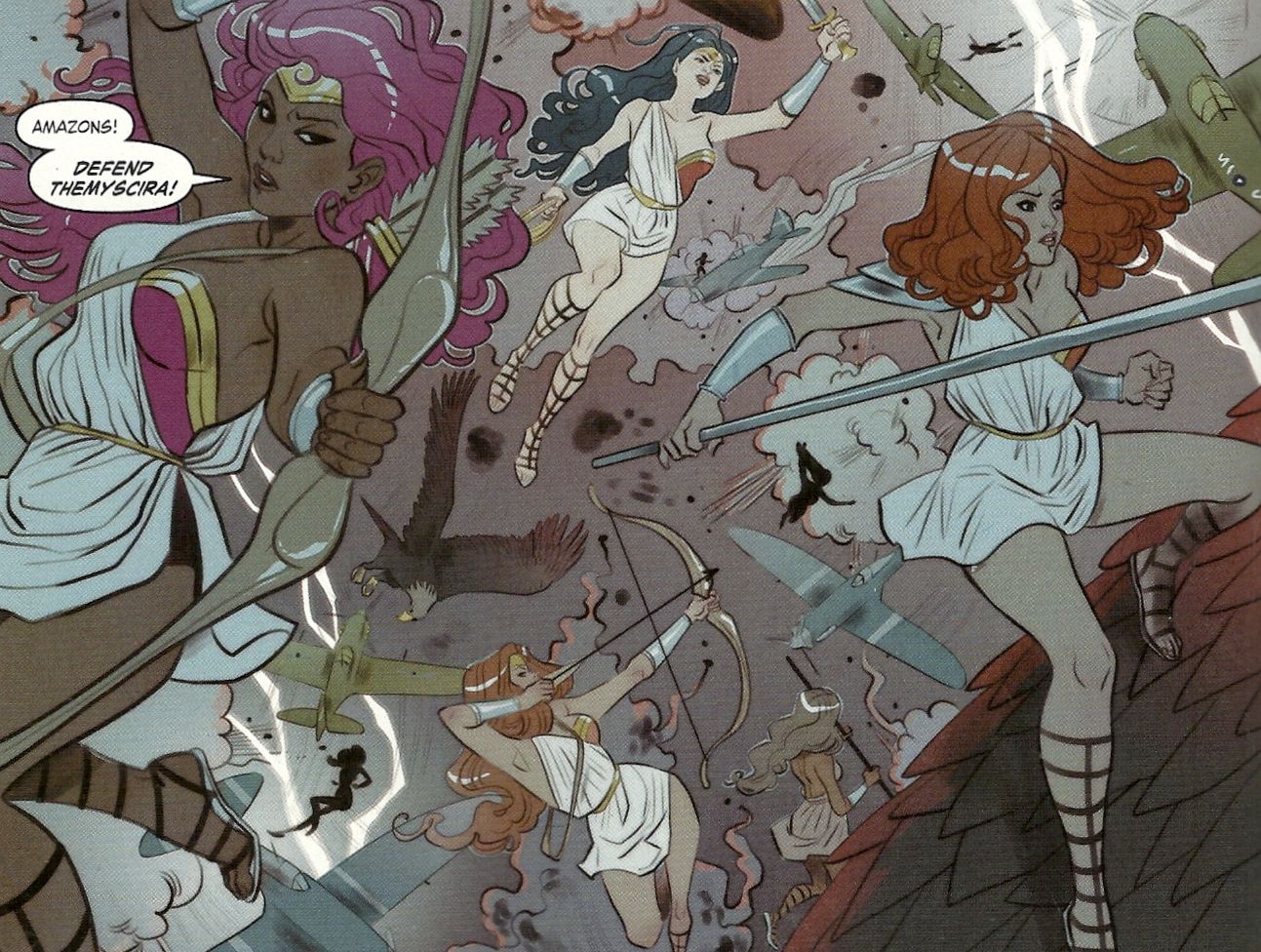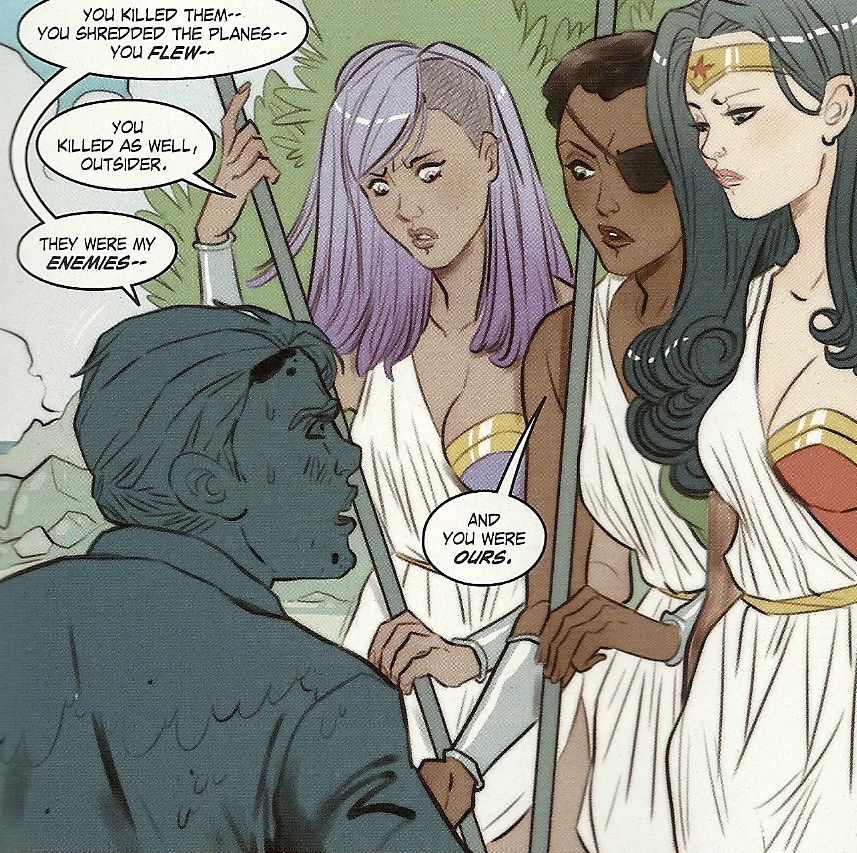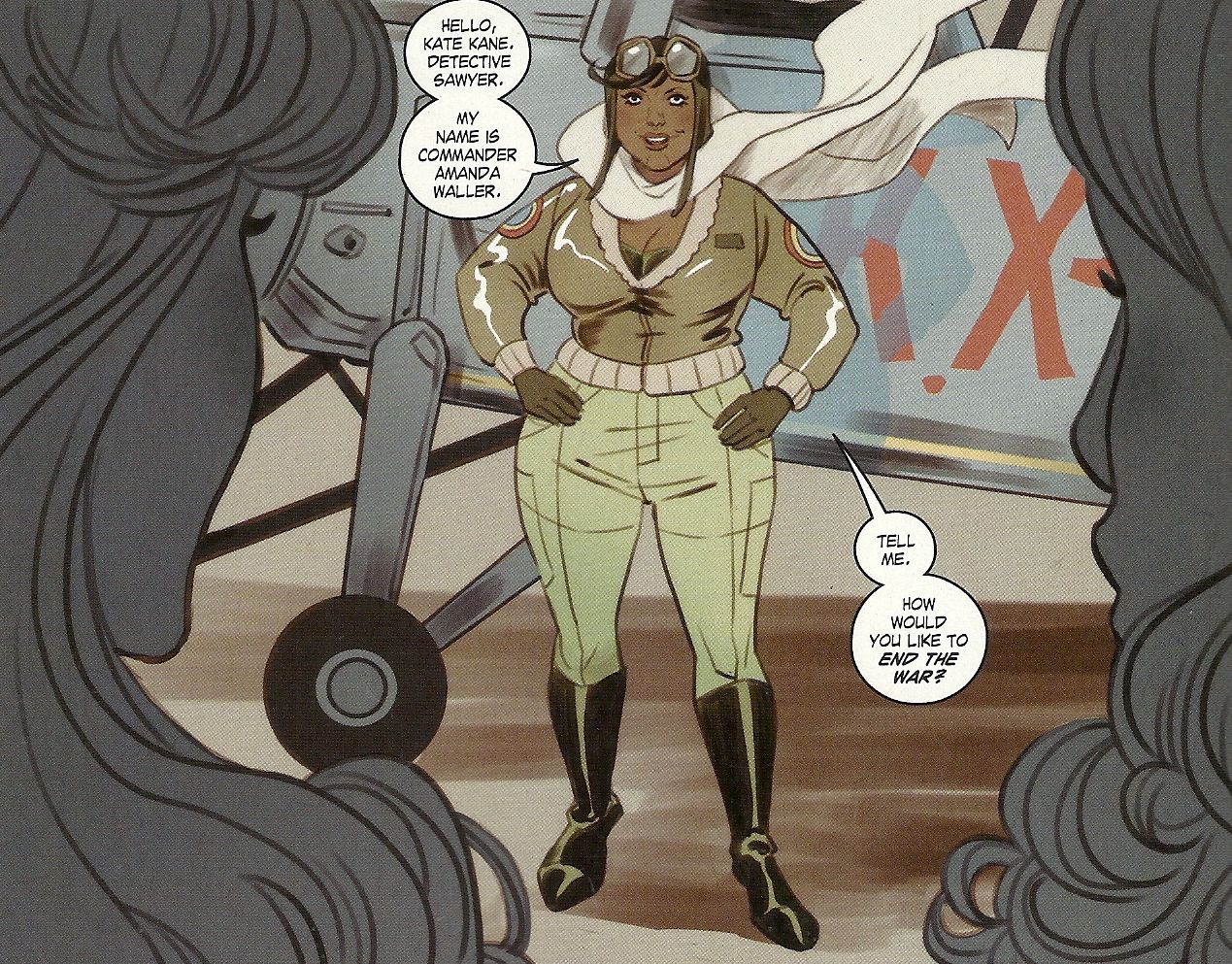You would be forgiven for having low expectations, or no expectations, for DC Comics: Bombshells, the digital-first comic based collectible statuettes, and subsequent variant covers, that reimagine the publisher's female characters in a sexy pin-up style.
However, those aren't necessarily the best places to turn for inspiration; in fact, DC's previous digital-first comic based on a line of statuettes, Ame-Comi Girls, left a lot to be desired.
So, as I said, you'd be forgiven for not expecting much from Bombshells, which debuted in print this week. But if you're a fan of DC's superheroines, you might not forgive yourself for missing out on this comic; it's pretty great.
A great deal of the credit goes to cover artist Ant Lucia, who married vintage, World War II-era pin-up art with the superheroines and supervillains, and came up with so many fun new designs. Credit is also due to writer Marguerite Bennett, who found a compelling rationale for a comic book featuring that line-up characters with those designs.
For instance, take the Bombshell Batwoman and Wonder Woman, both of whom appear on the cover of this issue, and star in the first two chapters.
Blending both definitions for the word "bat," Batwoman is outfitted in a black-and-red baseball uniform, a la those worn in A League of Their Own, which featured women filling in for men on the baseball diamond during the war. Wonder Woman clearly draws upon the iconic Rosie the Riveter, who embodied the role of women in the workforce. Bennett makes it rather explicit in the opening of the issue.
By day, Kate Kane plays ball for the Gotham Knights (here, the women wear domino masks to protect their identities, as so many people are opposed to the idea of women's sports). By night, she dons a more bat-like version of her costume and fights crime, like thwarting the would-be mugging of the Wayne Family with a kick to Joe Chill's throat and baseball bat to the head.
A radio announcer at her game against Bette's Gotham Griffins sums it up:
With the men abroad, it's up to the girls of Gotham to keep the city up and running--and what a fine effort they're making! Fire stations, factories, welding, and rivting are all manned--er, womanned!--by our little ladies-- --As is the great American pastime!
And as is superheroics, apparently.
This first, Batwoman-focused chapter also introduces us to Kate's girlfriend, Gotham policewoman Maggie Sawyer, and Kate Kane's pretty damn exciting previous life, which included going on safari and fighting in the Spanish Civil War with Hemingway. This Batwoman's adventures sound a hell of a lot more exciting than those of the Batwoman whose comic book DC just canceled not too long ago.
The next chapter introduces us to Bombshell Wonder Woman, as U.S. pilot Steve Trevor is badly wounded and washes up on the Paradise Island, helping to inspire Princess Diana to join the fight against the Axis. Ironically, Bombshell Wonder Woman is basically just Wonder Woman, as this sequence effectively repeats her traditional origin, with only a few minor alterations (among them, placing Paradise Island/Themyscira a few miles off the coast of Greece, and thus well within the theater of war).
The final chapter is the biggest departure in terms of the characters' settings and origins. It features two blonde sisters in Moscow, who have enlisted to be among Russia's "Night Witches" female pilots (Garth Ennis and Russ Braun did a pretty great comic on the Night Witches for Dynamite in 2008, collected as Battlefields: Night Witches, if you want to read a comic book devoted to them). One of the women is named Kara and the other Kortni. One of them is super-strong and can fly without a plane, and the cover will alert you to which DC superheroine she's going to turn out to be. Her sister is, as per the solicitation for this issue, destined to be Stargirl.
All three chapters are drawn by the incredibly talented Marguerite Sauvage, who's work we've previously seen in Sensation Comics (she drew the story in which Wonder Woman was in a rock band). Her character designs are all pretty amazing. Not only doe she offer lovely renditions of Lucia's designs, but she creates a whole fantasy 1940s world, and hits every note perfectly, from hairstyle to fashion to decor.
Every panel of the book is a joy to look at, and Sauvage's art – which she colors herself – almost seems to glow. The middle chapter, the one set above and on the shores of Paradise Island, is maybe the best. It lacks the cluttered, lived-in period details of the Gotham chapter and the highly-stylized, propaganda aesthetic of Moscow, but Sauvage's Amazons are a perfect blend of classic mythology (note the way one breast is removed from view), William Moulton Marston and H.G. Peter's conception of the Amazons, and the later mini-togas-and-sandals look.
I also like the way Sauvage seemingly explains Wonder Woman's classic costume: the bracelets and that particular style of bustier? That's what all Amazons wear.
DC has only solicited the first three issues so far, and the art will change in the second issue, so it remains to be seen how the level of quality will hold up. But one couldn't ask for a better start. Great story, great art, great first issue – regardless of what the series might be based on.

